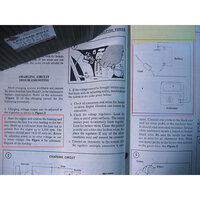freddy3
XS650 Addict
- Messages
- 479
- Reaction score
- 120
- Points
- 43
Stock 1972 XS2 (owned since '75)...
Question: What would cause the engine to immediately stop when the fuse running from the battery (located just below the left side of the seat) is disconnected?
Background: 30 minutes into trying to adjust the voltage regulator for 14.5+ VDC (lights dim at idle, but increase with higher RPMs), I shut the engine off to clean the regulator contacts. Then, I reconnected the fuse and re-started the engine to continue testing the regulator. A few minutes into testing, I noticed that I'd forgotten to disconnect the fuse again before rechecking the system voltage. So I disconnected the fuse and the engine immediately stopped.
Thinking it was a fluke (because I'd been running the bike for the past 30 minutes w/o the fuse connected without issue!), I reconnected, restarted and disconnected the fuse again. The engine stopped. Rinse, repeat.
What did I do to cause the engine to stall when disconnecting the fuse all of a sudden?
Question: What would cause the engine to immediately stop when the fuse running from the battery (located just below the left side of the seat) is disconnected?
Background: 30 minutes into trying to adjust the voltage regulator for 14.5+ VDC (lights dim at idle, but increase with higher RPMs), I shut the engine off to clean the regulator contacts. Then, I reconnected the fuse and re-started the engine to continue testing the regulator. A few minutes into testing, I noticed that I'd forgotten to disconnect the fuse again before rechecking the system voltage. So I disconnected the fuse and the engine immediately stopped.
Thinking it was a fluke (because I'd been running the bike for the past 30 minutes w/o the fuse connected without issue!), I reconnected, restarted and disconnected the fuse again. The engine stopped. Rinse, repeat.
What did I do to cause the engine to stall when disconnecting the fuse all of a sudden?


